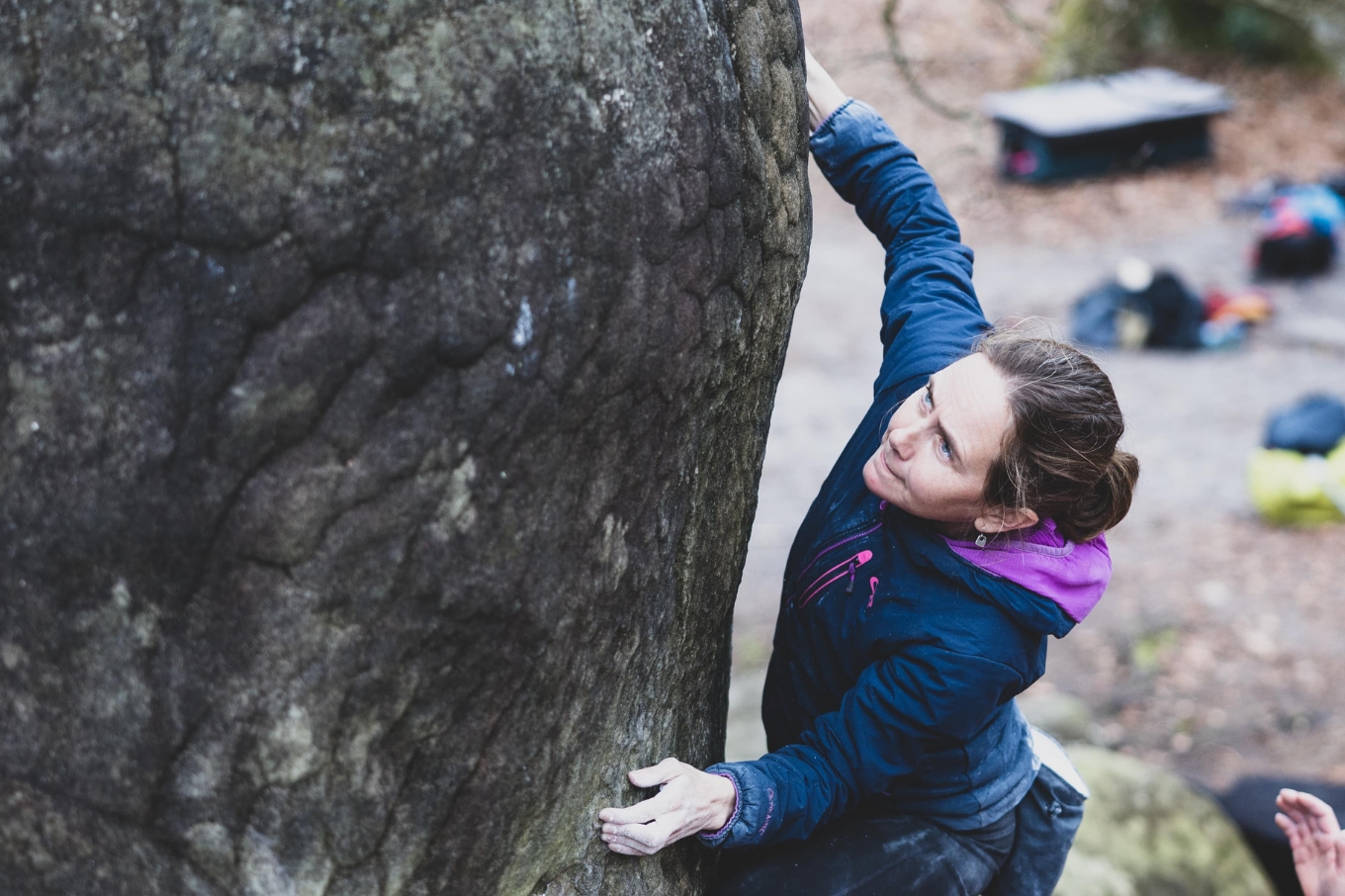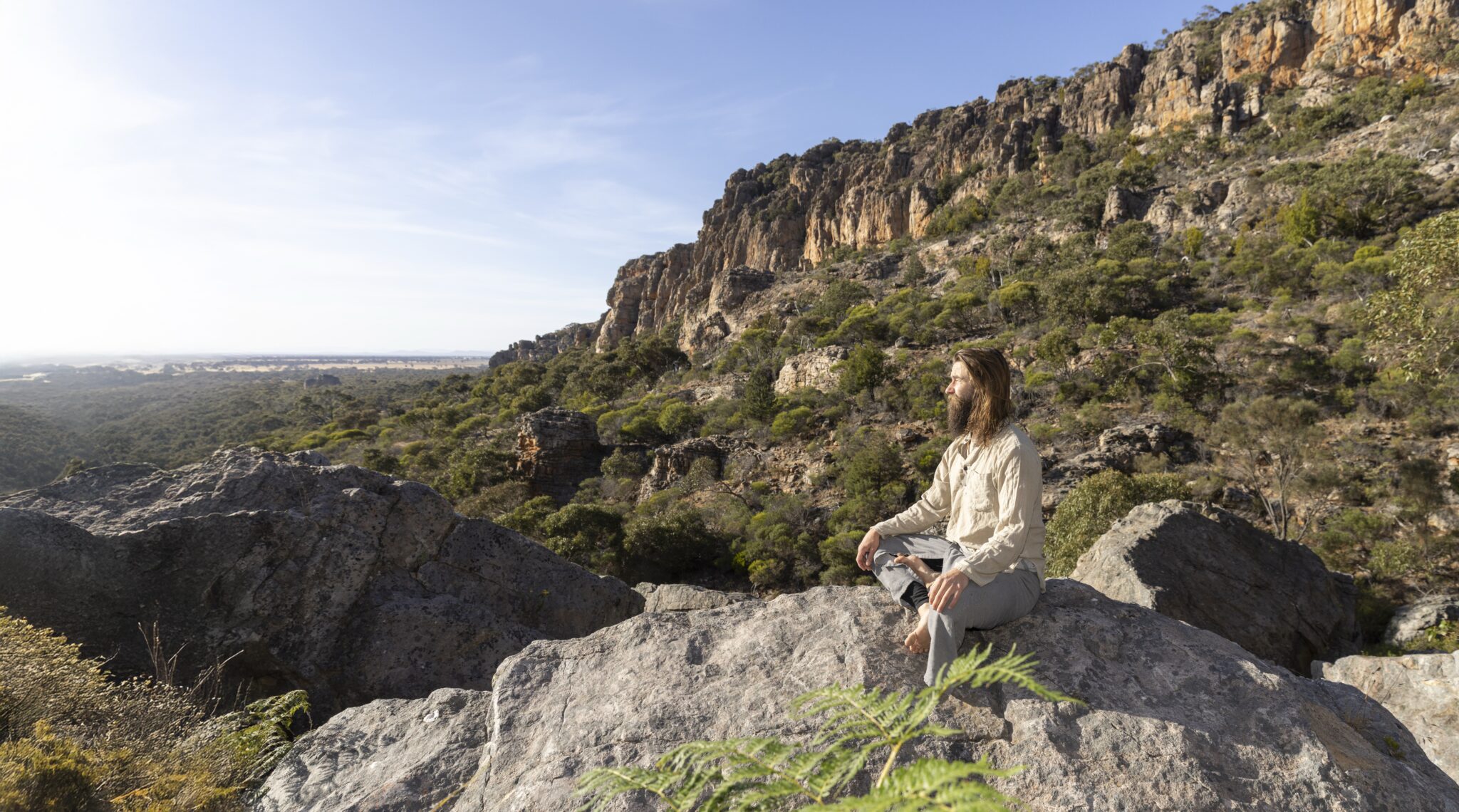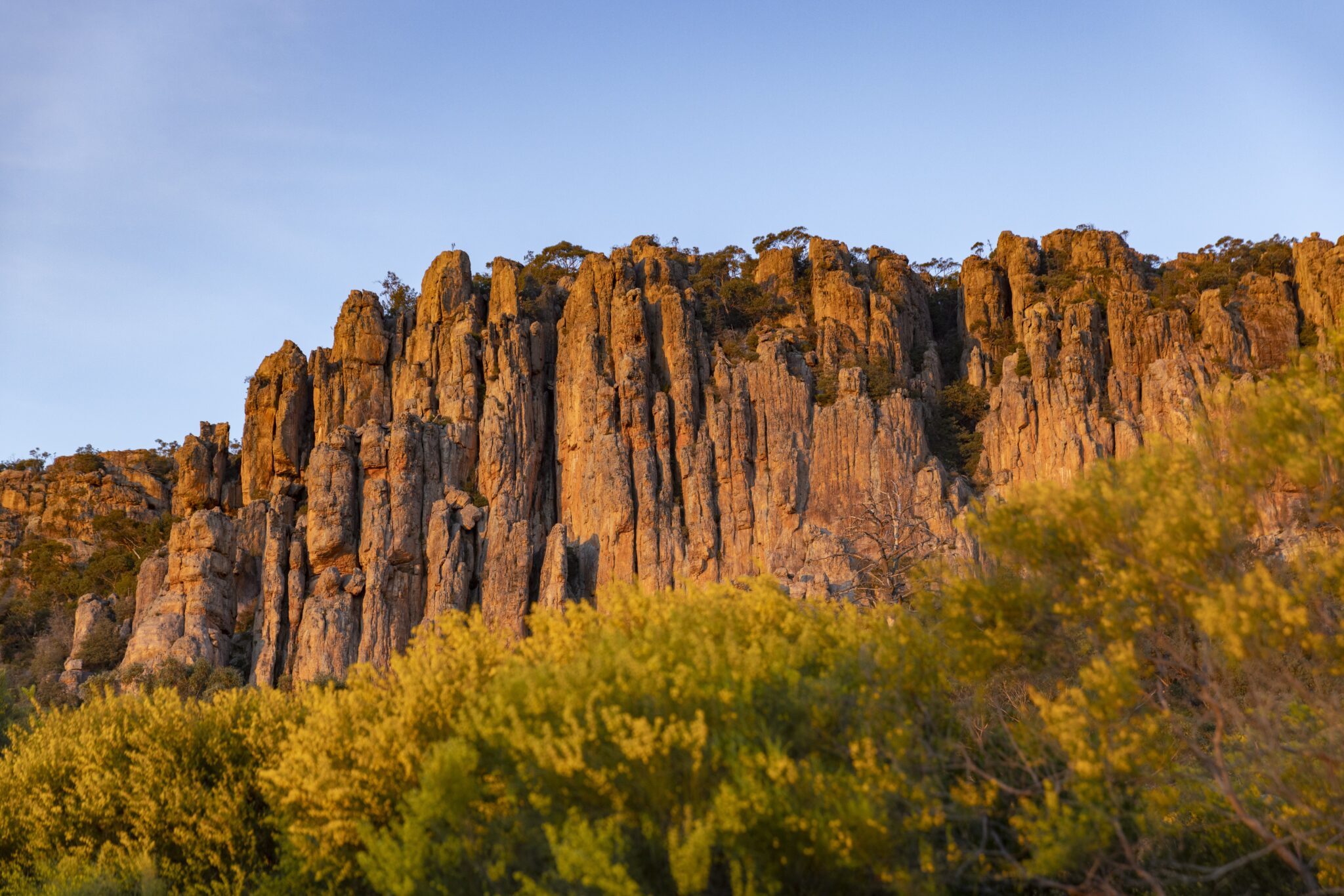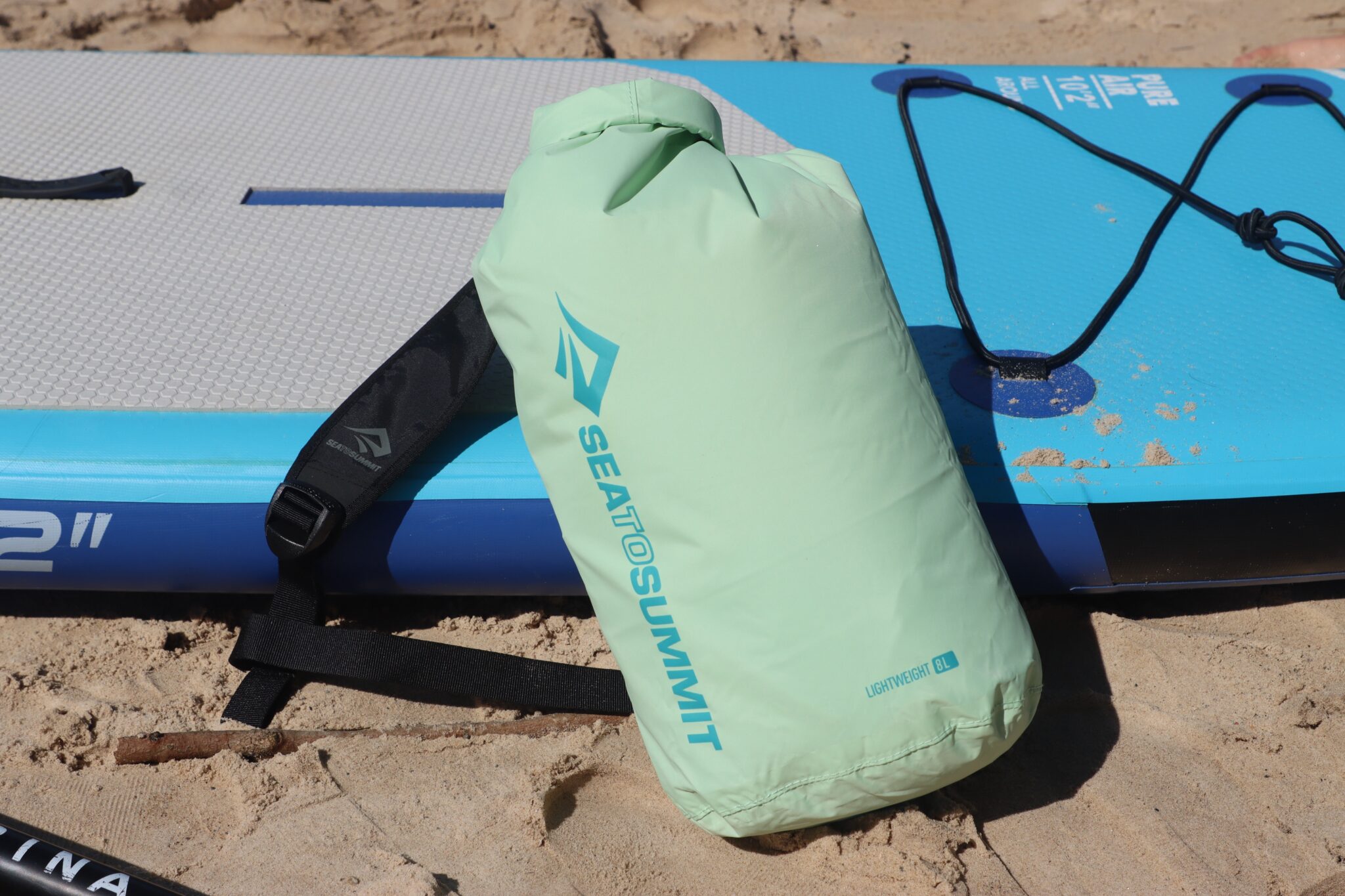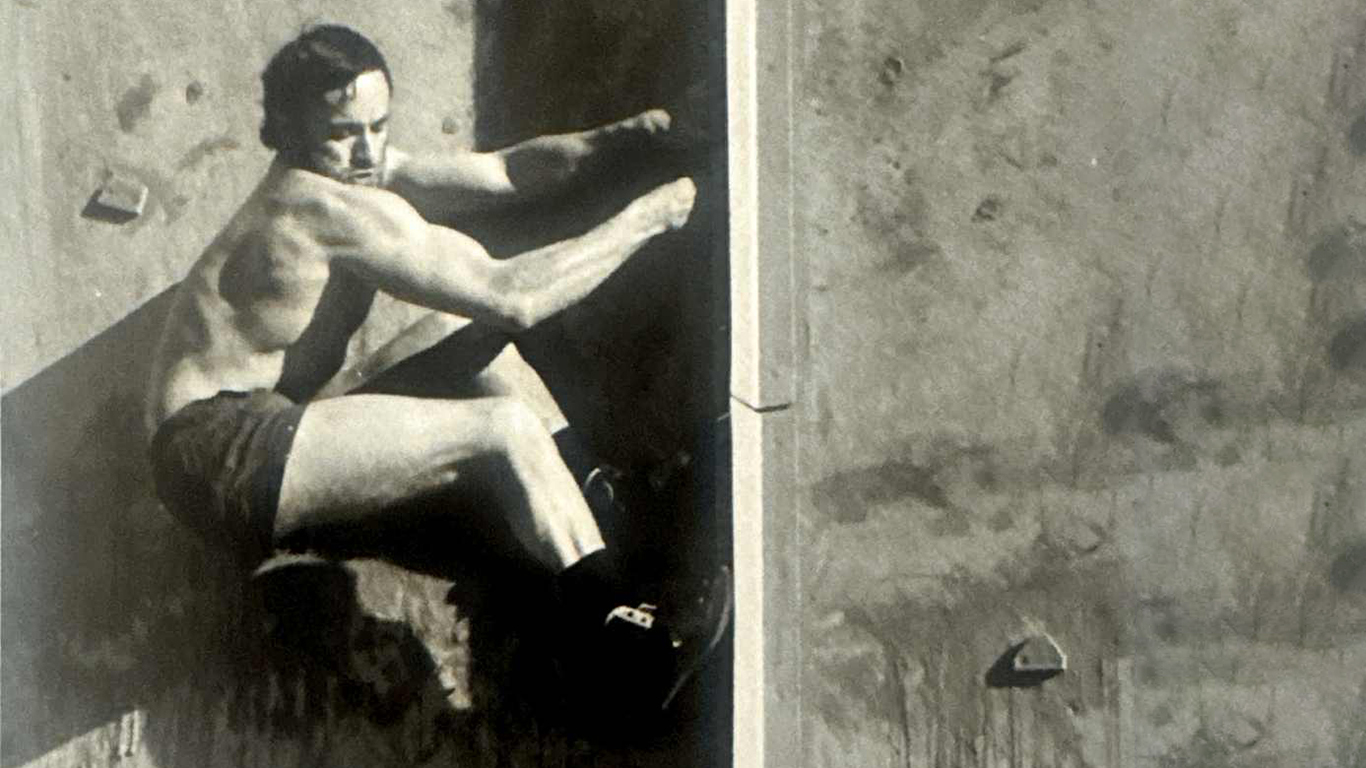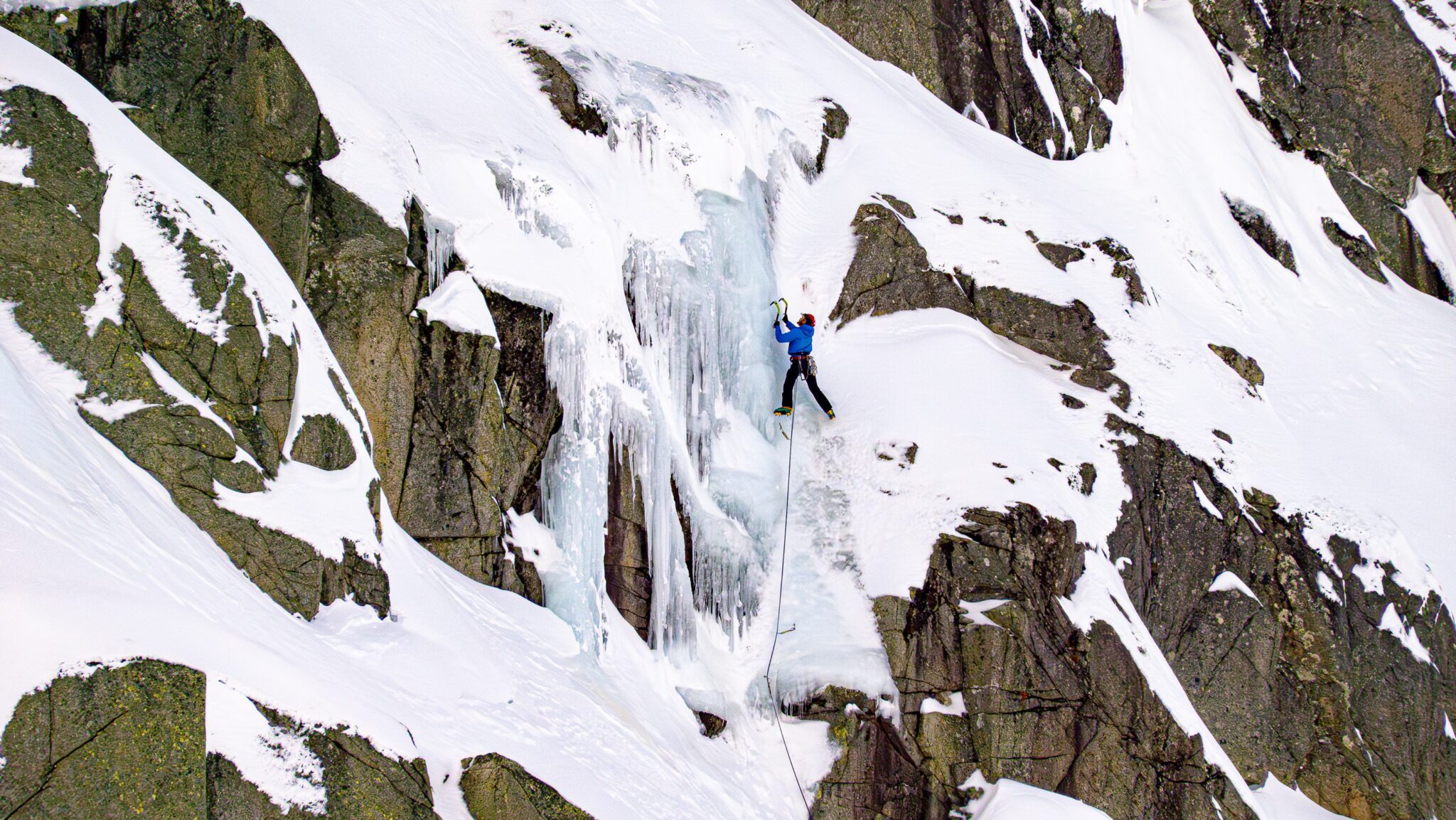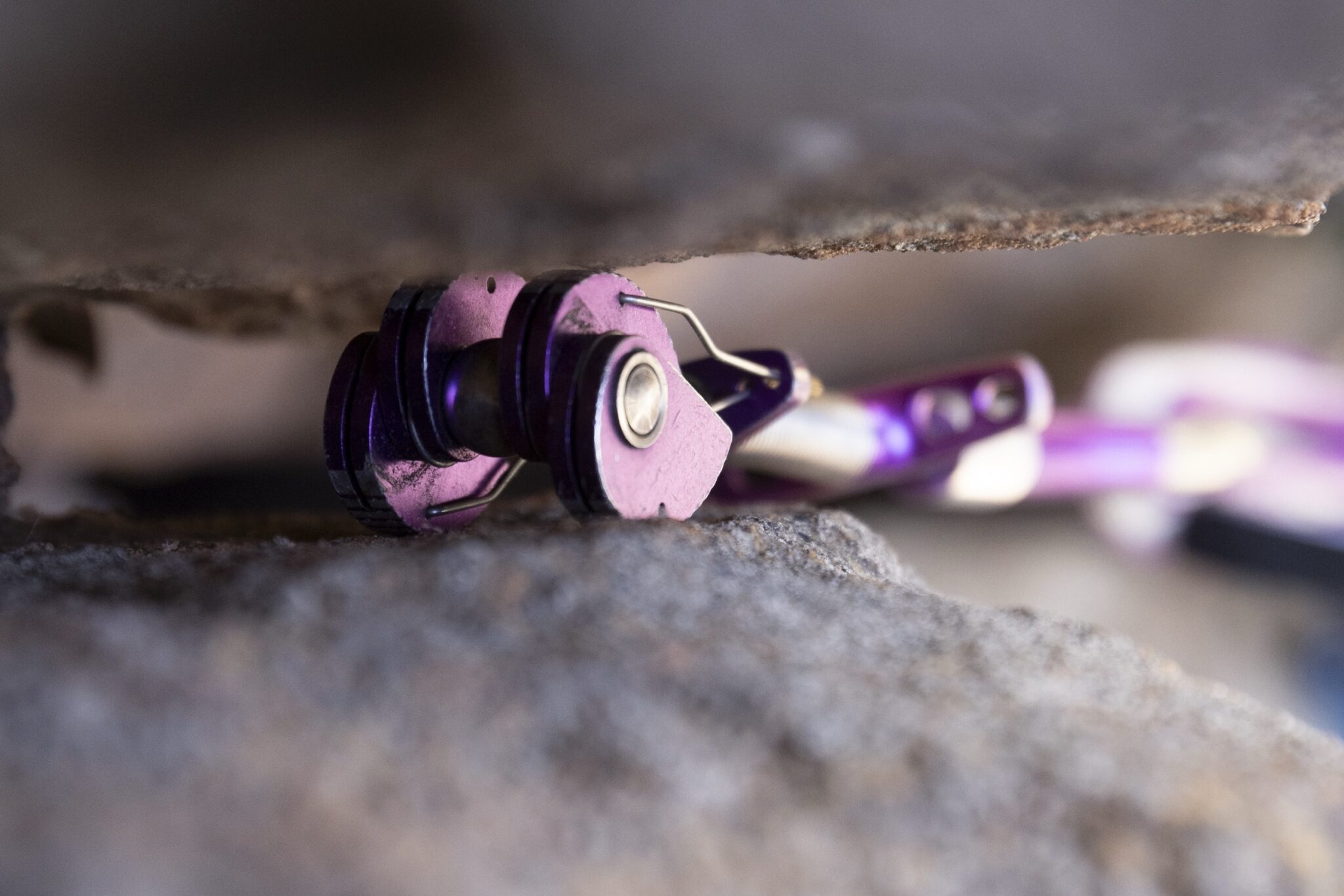Behind the book: Beth Rodden's A Light Through The Cracks
Shining a light through the cracks
Photos: Ryan Moon
One of the world’s greatest climbers, US athlete Beth Rodden is known for many things. She holds the record for hardest first ascent of a crack climb by a woman, and has achieved numerous notable free climbs on El Capitan. In recent years she has become known for her commentary and advocacy around body image and equality in climbing. In 2000, at just 20 years old, she was one of four climbers, including her then-boyfriend Tommy Caldwell, kidnapped for six days in Kyrgyzstan, bringing her an extra level of fame she never wanted.
Beth’s newly released memoir A Light Through the Cracks: A Climber’s Story had been on her mind for nearly a decade—with the story she needed to tell evolving and changing over the years—before it was published in May this year. At VL we were stoked to chat to Beth about the book, and excited to bring you an excerpt.
What made you want to write the book, and why now exactly?
As a professional climber I always felt like I should write a book—as your career goes on it’s a box to check. After my divorce, then becoming a mum, and overcoming injuries, [my idea for the book] changed from what I thought I should do, into what the book I would have needed at different points of my life would be. I’ve gained so much strength and felt so seen though other people sharing their stories, and I think this is the type of book that I would have really latched onto, and that would have given me a lot of support.
When I started climbing, a lot of the books and dialogue in the community was very black and white, and depicted the typical hero’s journey—you rise, you fall a little bit, and you rise stronger. It was shiny and packaged, you know that type of thing. I would have liked—and I do like—hearing people’s stories with all the nuances in life, all the in-between moments, and all the conflicting emotions that people feel, and not just the stuff you think you should hear.
Who do you imagine your readers are? Who will pick up this book and get something out of it?
I honestly have no idea. I feel like if it could reach young girls, women in their 20s and mothers, then those are the times of life when it would have been good for me… And I’m sure that in 20 years if you ask me, I’ll say “I should have waited 20 years [to write it] because I have a whole different outlook on things now.”
The book described the aftermath and your recovery after Kyrgyzstan. There are probably plenty of people who are drawn to extreme experiences in climbing as a way to deal with, or block out, trauma.
I definitely think sports and moving your body can be a great coping mechanism. But, at least for me, it can be a way to hide your feelings as well.
Trauma can be so specific and so universal at the same time. For me, going through the experience of trying to start unpacking that, and how it kind of bubbled up in all the different parts of my life, was really eye opening—especially because therapy and feelings were very taboo or seen as weak in the climbing community for the longest time. So just to shed a light on that has been—and I hope will continue to be—a process that is helpful in my life.
How does climbing as a sport treat women? This was one of the themes that came through in the book, and I wondered what sort of changes you have seen over the years.
I’ve seen it changing a lot and probably the most noticeable way is that those subjects are actually talked about now. Eating issues were never talked about, even though they were clearly prevalent in the climbing community. Inequity in pay was never talked about, and now it’s widely discussed. And the same with inequity in climbing and the need for it to be a more inclusive community that welcomes all races and genders, and hopefully have a level playing field. I don’t think that we have a completely level playing field—I don’t know if that’s ever achievable—but I do feel like it’s coming along.
Ten years ago when I called my sponsors to tell them I was pregnant, I was fully expecting most of them to cut me completely or reduce my pay. Minus a couple I was kept the same. But for my younger friends who are having kids now, there’s not even a question of whether they’ll be able to continue in their careers, so I think that’s great.
And if you look at what types of images are used for advertising in the climbing community it is a lot different to what it was in the 90s and early 2000s. You see more different body types, you see more women, I feel like it’s a more diverse field. Again, obviously it’s not even, and we have a long way to go, but it’s getting a lot better.
What are your goals now—climbing goals or life goals?
Gosh, I don’t even know. I feel like this book was occupying so much of my brain capacity for so long that I don’t think I have any concrete things on the horizon. This is done, and I don’t know what’s next!
How long did you spend writing the book?
I started the process nearly 10 years ago, and initially that process was just journaling in a concise manner. Rather than just having these thoughts floating around, I would actually sit and write them down. And I would try to think of what stories or whatnot I would put in the book.
Pre-Covid I was really heads down for a bit and I thought I’d finish the book in late 2020. Then Covid happened and it got totally derailed. Probably for the last couple of years I’ve been more heads down…. Not to sit down and write for eight hours a day, but it has occupied my brain space and what I was thinking about.
Any key points or takeaways for the book you’d like readers to come away with?
Life is nuanced, you know. And for me it’s totally about learning that you can experience conflicting things at the same time and that’s totally normal. I felt like I grew up in the climbing community at a time when it was very black and white, and that you had to be this one way to be successful, not afraid of heights, always fit all the time, and all that.
A Light Through the Cracks
Excerpted from A Light through the Cracks: A Climber’s Story by Beth Rodden. © 2024 Published by Little A Books, May 1, 2024. All Rights Reserved.
Estes Park, Colorado, October 2001
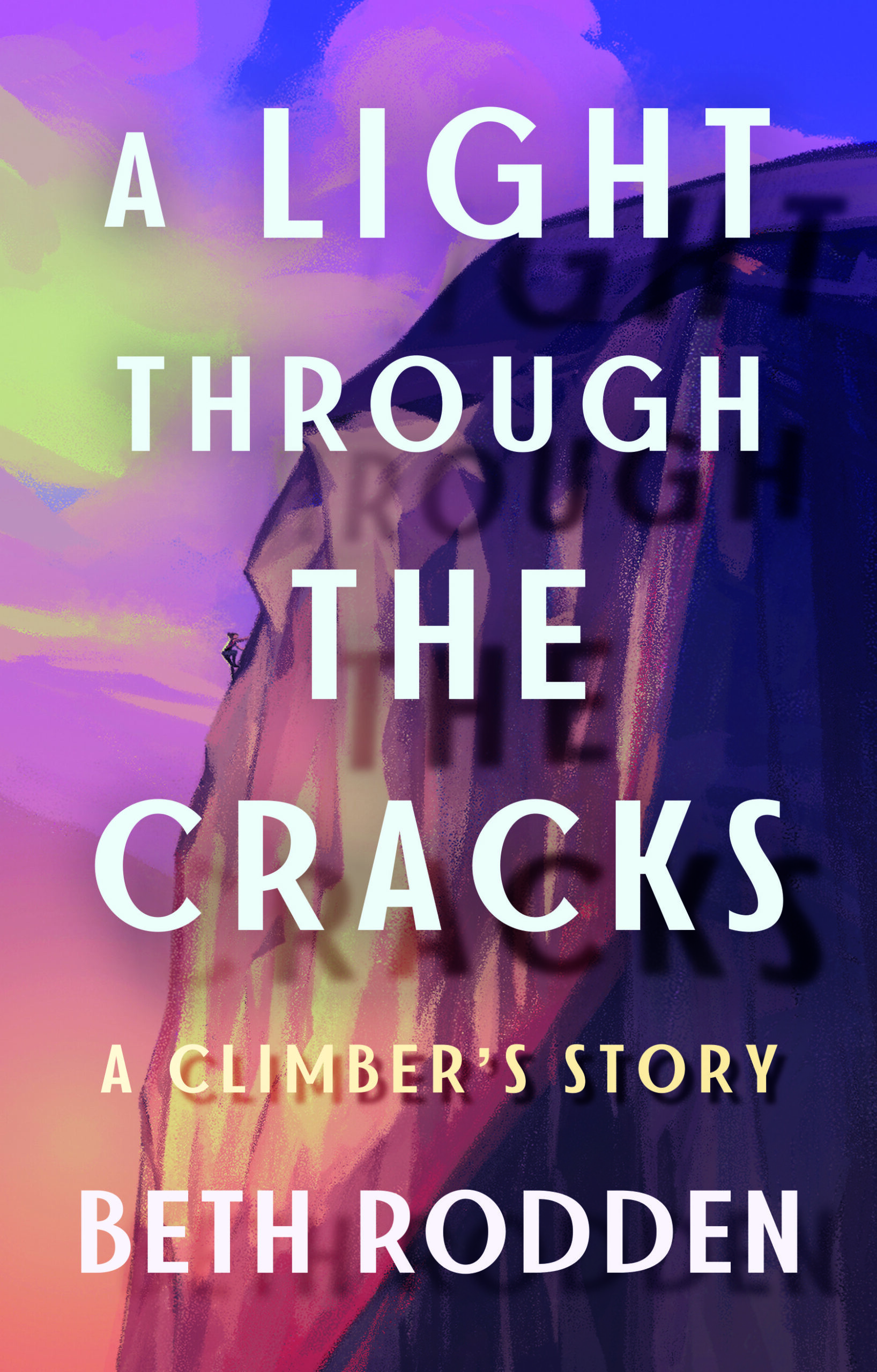
I missed being in control. I missed feeling like my body, my life, my decisions were mine. I didn’t have the language for it then, but on some level I could feel that, too often, I was still reacting to the trauma of Kyrgyzstan. I wanted to act, not react. I wanted to truly be as fine as I always claimed to be.
Tommy and I never talked about it. We would talk about the business side of things: the book money, the interview we had to do with another TV show, the movie rights, the new script that had come in. (We called it the Hey, baby script because every time my character addressed Tommy, she started with “Hey, baby.”) But the actual Kyrgyzstan trip? The nightmares, the flashbacks, the paranoia I still struggled to contain? Maybe we were scared to talk about it, or embarrassed. Maybe Tommy was over it. He seemed like he was okay, he always said he was okay—but then again, so did I. These were intimate details that maybe a couple could—should— talk about, but we didn’t.
By late October I knew I needed some semblance of normal. My collapse on 9/11 showed how far I still was from getting there. My six insurance-approved therapy sessions earlier in the year had gotten rid of the regular nightmares, but they didn’t even begin to scratch the surface of everything else that was going on. My eating was out of control. I’d binge for days in a row, until I felt so distended I would burp sulfur burps because I was literally making myself sick. I knew I was going to hate myself, hate how I felt, hate Tommy, hate the world, but I couldn’t stop. I hated that feeling too.
We never really talked about the problem, but we’d talk about the solution: the exercise. That became a love language for us. Tommy hated seeing me so unhappy, I hated being so unhappy; the fix was clearly to exercise myself into oblivion so that I’d feel better.
Tommy had goals, I had goals, but they all seemed so far off right now, so out of reach. I needed a bridge, so I decided to try the Sphinx Crack in the South Platte of Colorado. The South Platte has a much starker kind of beauty than Yosemite. There are no big trees or shade. The rocks are all rounded and yellow-white-gold. It looks almost like another planet, remote and vast and strange.
The Sphinx Crack is a completely manufactured route. A long, pretty splitter crack that runs diagonally through a huge, yellowish boulder, it looks like a Hollywood ideal of a rock climb. It was created when the Colorado School of Mines blew it up back in the 1970s, which should probably have put a stain to its name, but oddly enough the explosives created an amazing climb that seems quite natural. It was doable as a day trip from our cabin in Estes, it was only one pitch with a short approach, easy to set a toprope on, and I was almost guaranteed no one else would be on it to see me trying. I hoped the project would feel like someone was holding my hand: a gentle on-ramp back into climbing hard.
My body felt foreign as I started up, like I was wearing a weight vest when I pulled on the rock. My hands felt tender and tore instantly. Rolls of stomach skin spilled over the top of my harness; I hated myself, tucked them back in, hoping they would disappear if I couldn’t see them. Each time I pulled on a hold it was shocking, like picking up a huge cardboard box I’d thought was full of pillows but instead was full of books. My brain remembered what had been forged into it for the past seven years: light, snappy, strong muscle and arm responses. If I had to get used to this box full of books I might quit.
After a few attempts, I slumped back into the passenger seat of the van. The backsides of both my hands were bleeding from being jammed into the crack. Normally after a Valley season my skin would have been hardened, resilient. My feet hurt too, my toes no longer used to being cramped inside of tight climbing shoes and shoved into vertical crevices in granite. But the pain felt like I was actually doing something with my life again, instead of floating, wallowing, like I had for the past fifteen months. I felt like I had a purpose.
The next morning I woke up feeling like my body had been through a blender and then through a pasta-making machine, like it was torn up and flattened all at once. I smiled, soaking in the pain. This was what I remembered; this feeling was as close to heaven as I could be. Sure, I couldn’t do half the moves on the route, and it would take at least a week for the scabs on the back of my hands to heal, but maybe, maybe, I could start to feel like a climber again.
A week later, when my skin was healed, we drove back to the Sphinx. This time I was prepared and taped my hands. I had an elaborate taping routine that I had perfected in Yosemite. First, I’d coat my hands with Mueller Pre-Tape Spray (like a mild liquid glue, in an aerosol can). Then I took various lengths of athletic tape and placed them in a specific pattern: three full-width pieces on the back of each hand, one around the meat of my thumb, and three tiny strips around the base of my fingers, overlapping the strips on the back of my hand. Finally I’d carefully wrap tape around my entire hand, trying not to get too much on my palm where I needed contact to climb. By the end I resembled a boxer about to enter the ring.
My next attempt on the route was so different, so much better, than my first. I began to remember how to decode a route, how I thought of it as an entire puzzle instead of just small pieces to conquer. My mom loves jigsaw puzzles, and the first thing she always does is lay out all the pieces and find the corners and edges; then she slowly works through the colors and shapes. I love a good puzzle too.
I reminded myself that each piece was instrumental to the send, to try and take the victories when I had them, to remember that even figuring out to turn my big toe another 15 degrees upward was a success. My fingers started to remember how to jam in the crack of the rock. My skin started to get tougher, able to squish and squeeze and hold my body weight without ripping. By the end of the second day I had done all the moves. I felt lighter than I had in months.
Slowly my mind filled up with the puzzle of the Sphinx Crack, forcing out the wandering thoughts that would bring me to the edge of nightmares. It was always the puzzle I had loved best, the thing that set climbing apart from every other sport I’d tried. On my third day, I led the route with two falls, which meant I placed all the gear in the crack and I only fell twice before reaching the top. I needed to climb it all in one go, with no falls, to be able to claim a free ascent—the first female ascent. I dangled on the rope at the end of the climb and noticed my stomach rolls weren’t folding over my harness anymore. The past two weeks of climbing and focus had actually worked. I liked how I felt: it was familiar and sane and controlled and known. I wanted more of this. My breath came fast and my arms were tired, but I felt at home.
A few more rest days, another training session in the garage, and I was ready to send. We pulled up in the van. I cinched down my harness, at least an inch tighter than on my first day on the route—a victory in itself, I thought. I tied into the end of the rope and felt the familiar butterflies in my stomach. My tape job was perfect: not too tight, not too loose. Besides, I knew the jams well enough that I might not even need the tape, my hands nestling into their places like pulling on a favorite pair of jeans.
I started climbing. It felt like running downhill with a wind at my back. My mind was quiet, and my body felt like it had a choreographed dance to follow, seamless and without friction. What a treat. I was wedging my fingers in tight, sharp constrictions, and it put a smile on my face. Compared to the dark pathways where my mind had lingered over the past year and a half, bleeding fingers and the crisp, dry Colorado wind seemed like a vacation.
Partway up, I could feel the lactic acid starting to burn, and I paused. There’s a point that I think of as the normal-person stopping point, when I am short of breath, when my lungs are on fire, when my arms ache and my fingers start opening, when any sane person stops running, stops climbing, knowing they pushed hard, they got a good workout in, they made improvements. But I could go further, sometimes. When it was time to send, I could access another well of energy, my reserve. It was probably what propelled me in those last hours of captivity, when I didn’t want to go any farther, when I just wanted to give up, but then found I could run for hours, run literally on empty.
I tried not to let my mind wander to Kyrgyzstan. I shook my hands behind my back, stretched my fingers on my legs, and got some recovery. I started climbing again, breathing methodically. My hands wanted to open, wanted to fail, and if I had been on a normal climb without a crack I would have fallen: my fingers wouldn’t have been able to stay closed and grip the holds. But there’s a special type of pain, a special type of fatigue, with crack climbing, because your hand is literally wedged in the rock: no place to go. It doesn’t matter that your hands are failing you, because they are stuck until you pull them out and place them higher. It results in an even higher level of fatigue and more massive pump (as we climbers call forearm fatigue) that burns and stings and aches all at the same time. That pain was my specialty.
The last thirty feet of the climb, I felt like each move was my last. By the time I pulled over the top, all I could do was lie on the golden slab, panting and moaning and groaning. My fingers were so tired, my forearms so full of acid, I couldn’t even untie my rope. I was destroyed but so happy. I had forgotten how much of a sweet escape a hundred feet of rock could be. My waist was tiny, my mind was full of climbing. Tommy was right. The more I could do this, the happier and saner I would feel.
The climb gave me a professional boost too. My picture landed in the magazines, alongside the first articles about one of my climbing accomplishments since Kyrgyzstan. For several months, around this time, I had been asking one of my sponsors for a raise: from $200 to $500 a month. They had always evaded the question, found some subtle way to dodge or say no without outright shutting me down. Shortly after I sent the Sphinx, we were on a road trip near their offices and stopped in. I figured, why not ask one more time? Tommy came along with me. And this time, as he sat in the room, watching while I made my request, they said yes.
I’d known since Lurking Fear that being partnered with Tommy could bring advantages, privileges that other female climbers didn’t have. But I also knew he couldn’t prop me up indefinitely. I had done the Sphinx for me, to get my career and my dreams back on track. I hoped that this ascent would start to drown out the media coverage of Kyrgyzstan. I wasn’t proud of Kyrgyzstan, didn’t want to be known for Kyrgyzstan. I wanted to be known for my climbing.
Maybe if I just kept piling on hard ascents, they would bury all the news about the kidnapping. Would people lift up a dozen, a hundred, a thousand blankets to see what color the bottom one was? Probably not. This was the first blanket I’d put over Kyrgyzstan.

